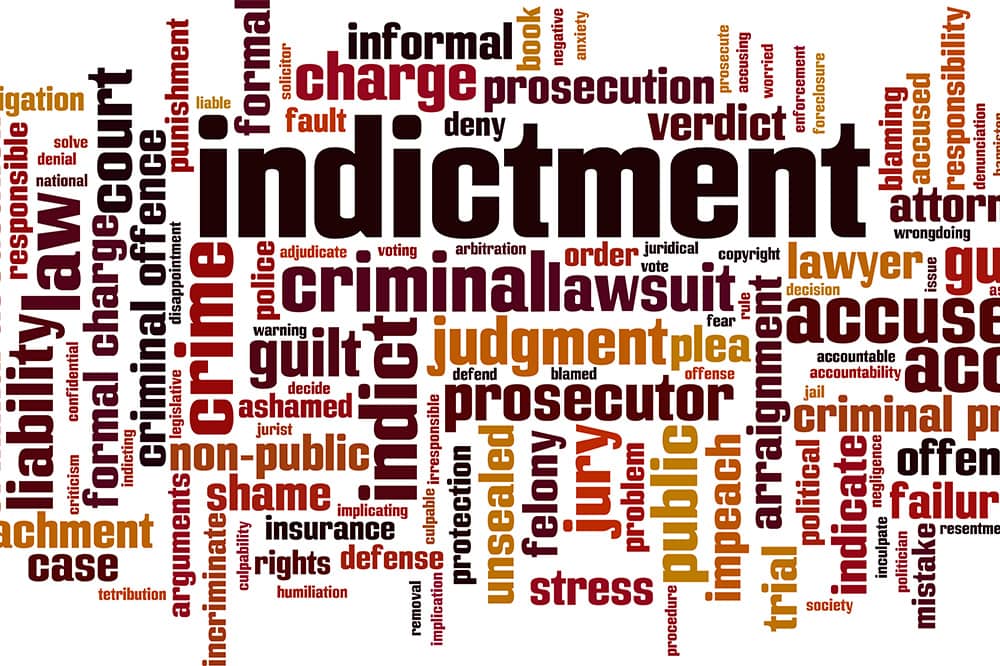What Happens After Arraignment for Felony Charges in Ohio?

Your felony arraignment marks a pivotal moment when the charges against you are formalized, and your case enters the criminal justice system. From this point forward, the decisions you make and legal strategy you employ can dramatically impact the rest of your case and the potential penalties you face.
Don’t go it alone against the full force of the prosecution – understanding what comes next and having a skilled criminal defense attorney advising you is crucial for protecting your rights, shaping an effective defense, and positioning yourself for the best possible outcome. Here’s what to expect.
Felony Arraignment / First Court Appearance, Explained
The arraignment is your first appearance before a judge, where the felony charges against you are formally read aloud. A few key things happen at this initial hearing:
- You’re advised of the specific charges and constitutional rights (including your right to an attorney)
- The judge determines whether you’ll be released on bail/bond or held in custody
- You have an opportunity to enter an initial plea (guilty, not guilty, or no contest)
- If entering a not guilty plea, a future court date is scheduled (more on that later)
While relatively brief, the arraignment lays the critical groundwork for your entire case. This is also why having legal counsel present is so vital – an experienced criminal defense attorney can immediately start advocating for you and protecting your rights.
Bail Review and Release Options
In many felony cases, bail is set at the initial arraignment hearing. However, that amount isn’t necessarily locked in stone. Ohio law entitles you to a bail review within three days of arraignment, where your attorney can argue for lower bail or release on your own recognizance (known as “OR” release).
Generally speaking, OR release is reserved for defendants with strong community ties, little-to-no criminal history, and who aren’t deemed a flight risk or danger to others. However, your lawyer may be able to sway the court by presenting a strategic defense and mitigation case from day one.
How Bail Works in Ohio
In Ohio, bail amounts are supposed to balance the need to ensure a defendant returns to court without being excessive. Judges look at factors like:
- The nature and circumstances of the charges
- Any prior convictions or history of failing to appear
- Whether you’re gainfully employed or a student
- If there’s evidence you could be a threat to the public
Even if bail is granted, release isn’t automatic – you or a bonding company must provide the court with the full bail amount. But when bail is prohibitively high, your defense attorney may request the amount be lowered based on inability to pay, lack of flight risk, and other grounds.
First Readiness or Pretrial Conference
In many Ohio felony cases, there’s a step before the preliminary hearing — the first readiness conference also called a settlement conference or prelim setting.
Scheduled shortly after your arraignment, this early meeting serves two key purposes:
- It provides your attorney an opportunity to discuss potential plea bargains and resolutions with the prosecutor before things progress too far. If common ground can be found, you may be able to accept a plea agreement at this stage and avoid preliminary hearings and trial altogether.
- It’s your lawyer’s first chance to request and obtain initial discovery materials from law enforcement and the prosecution. This includes evidence, witness statements, and other crucial information needed to start building your defense strategy.
While these conferences are sometimes skipped, they shouldn’t be underestimated. A skilled defense attorney can use this preliminary setting to gauge the strength of the state’s case, push for investigation holes, and potentially negotiate charges down before you ever step foot in the preliminary hearing room.
The Preliminary Hearing
If you entered a not-guilty plea at arraignment, the next major step is the preliminary hearing. The purpose is to evaluate whether there’s sufficient probable cause for the charges to move forward to trial court.
At this hearing, held within ten court days of arraignment, the prosecutor must present evidence and witness testimony showing reasonable grounds to believe a crime was committed and that the defendant (you) likely perpetrated it. Your attorney then gets an opportunity to challenge the prosecution’s case, cross-examine witnesses, and argue why the charges should be dismissed for lack of proof.
After weighing all the evidence, the judge will decide how to proceed:
- Bind the case over to the trial court if probable cause exists
- Reduce felony charges down to misdemeanors if evidence is lacking
- Discharge/dismiss the case against you entirely if probable cause isn’t met
Only a small number of felony cases in Ohio are outright dismissed at this stage. However, experienced defense counsel can leverage the preliminary hearing to cast doubt, reduce charges, and gain a strategic preview of the prosecution’s potential trial evidence.
Arraignment in the Trial Court
If the judge finds probable cause and binds your case over to trial court, you’ll be arraigned again on the new formal felony charges. Much like the initial proceeding, this second arraignment reiterates your rights and the accusations against you. A key difference is you’ll now formally enter a plea of guilty or not guilty.
Once your plea is entered, a new series of pre-trial events are set in motion:
- Future court dates are scheduled for conferences, hearings, and the potential jury trial itself
- Both sides can begin the discovery process by requesting evidence from each other
- Your defense attorney can discuss potential plea bargains or case resolutions with the prosecutor
For charges bound over after the preliminary hearing, this trial court arraignment acts as the launchpad for the remaining pretrial process. If no plea agreement is reached, it’s full steam ahead to the fight and the courtroom battle.
Second Readiness or Pretrial Conference
The second pretrial readiness conference is where the bulk of your case gets hashed out after arraignment. Both sides engage in back-and-forth negotiations while shaping their trial strategies.
On the defense side, we investigate every aspect of the charges against you and prepare potential motions to suppress evidence or dismiss the case. Pretrial conferences allow us to probe for holes in the prosecution’s arguments and leverage for a favorable plea deal.
The prosecutors, meanwhile, compile their evidence and testimony while weighing whether it’s worth pursuing the filed felony charges at trial. Especially when holes start appearing, they may agree to reduce or outright dismiss counts in exchange for a guaranteed conviction on others.
While most cases resolve these pretrial stages, those that don’t will eventually proceed to trial. Even then, we continue pursuing all available dismissals, diversions, and other pre-trial options right up until opening arguments begin.
Trial
If you cannot resolve the case during the pretrial process, it’s time to take your case in front of a judge and jury.
Once everyone is ready for trial, a panel of potential jurors is summoned to begin the painstaking selection process known as voir dire. When a final jury is seated, opening statements kick off the actual trial.
From there, it’s a contentious back-and-forth as the prosecution and defense make their cases by:
- Calling and questioning witnesses
- Submitting physical and expert evidence
- Vigorously cross-examining the opposition’s arguments
After both sides have rested, the jury enters deliberations to decide the verdict – guilty or not guilty – based on whether the prosecution proved the charges beyond a reasonable doubt. In Ohio, a guilty verdict must be unanimous.
Sentencing and Post-Trial
For defendants convicted at trial, the next step is sentencing. Ohio judges consider multiple factors when determining an appropriate sentence:
- Sentencing guidelines and minimum/maximum terms for the crimes
- The nature and circumstances of the offenses
- The defendant’s past criminal history and need for rehabilitation
- Statements from victims about the financial, physical, and emotional impacts
Common penalties for felony convictions range from hefty fines to probation to lengthy prison sentences in a state facility. In some cases, especially for violent crimes, judges may even impose consecutive (back-to-back) sentences spanning decades.
For those found not guilty, you are free to go. However, depending on the charges and evidence, the state may still have opportunities to pursue an appeal and potentially retry the case later.
Arraigned on Felony Charges? Our Attorneys Fight for Your Rights
A felony conviction often carries years of jail time and lifelong barriers to jobs, housing, voting rights, gun ownership, and more, even after completing sentences. With so much at stake, the path after felony arraignment is pivotal for your defense.
Don’t let a felony charge derail your life. Contact The Botnick Law Firm today for a consultation. Our client-focused approach and aggressive representation have earned us a stellar reputation, with numerous five-star Google reviews from satisfied clients. Trust our experienced felony defense attorneys to protect your rights and fight for the best possible outcome in your case.



